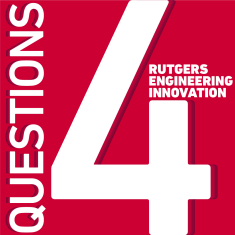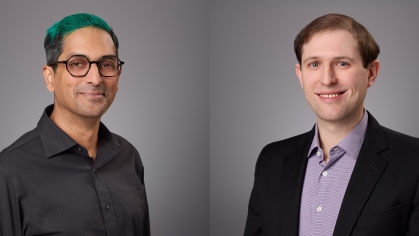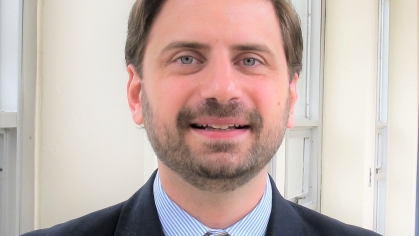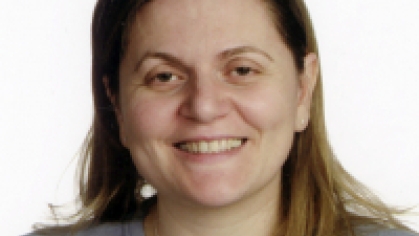Four Questions for Prof. Onur Bilgen: Developing Clean Energy Solutions

Onur Bilgen, an assistant professor in the department of mechanical and aerospace engineering, has been a member of the Rutgers School of Engineering faculty since 2017. He is also the director of the school’s Smart Systems Laboratory, which focuses on the conceptual design, modeling, control, manufacture, and testing of smart-material based multi-physics systems, including airline, energy-conversion and harvesting, and biomechanical systems, as well as robotics and mobile biomedical devices.
As the main PI, Bilgen is leading one of 13 teams funded by the U.S. Department of Energy’s Advanced Research Projects Agency-Energy (ARPA-E) $26 million investment in the development of new technologies to advance floating offshore wind turbines (FOWTs) as a clean energy solution for New Jersey.
Bilgen’s team of doctoral, masters, and undergraduate students, along with faculty experts including MAE department colleague Laurent Burlion, is devising software for designing efficient, cost-effective FOWTs by using control co-design (CCD), which refers to the design and optimization of a system simultaneously with the system’s controller. While the pandemic initially halted lab work, Bilgen’s team has been maintaining social distance while working in the lab since its summer reopening.
Bilgen also focuses on healthcare solutions. Low intensity vibration, or LIV, is thought to improve wound healing in diabetics. For a collaborative multi-university Veteran’s Administration-funded project, Bilgen is developing a wearable piezoelectric LIV “bandage” with the potential to speed the healing of diabetic ulcers.
What sparked your initial interest in engineering?
I was always interested in motion and forces in nature and in machines, as well as in the dynamic interaction of systems. I was fascinated by cars, airplanes, bicycles, and other machines. I was also interested in electronic devices and how they operated. In middle and high schools, I learned that mechanical engineering specializes in these topics – and much more.
My ARPA-E project is a case in point. As part of a multidisciplinary team that is helping to advance offshore wind production, we are tasked with developing a software for designing efficient, cost-effective FOWTs, while other team members are creating new designs and collecting data to validate the designs and computer tools.
What most excites and inspires you about your research?
I’m excited to make a difference with research that is partly basic research and partly applied research – whether by helping to develop a clean energy solution, or improve people’s health – with research that is partly basic research and partly applied research.
I’m inspired by my students and encourage them to pursue research opportunities. Last spring, a senior design team I was advising was awarded a highly competitive NASA University Student Research (USRC) grant for their project that seeks to engineer a more efficient, multi-mode hybrid drone delivery system.
Who benefits most from your research?
Our work will benefit many. By harnessing offshore wind power, a FOWT designed using CCD methodology will ultimately reduce the cost of electricity to the consumer. New Jersey, with its miles of offshore coastline, is an ideal site for FOWTs. In time, the success of this project will benefit the New Jersey economy by creating new jobs in the energy sector.
Certain healthcare patients such as diabetics are prone to developing ulcers and sores. Our research in developing a low intensity vibration-based “bandage” able to heal such wounds has the potential to become an affordable, effective, patient-controlled therapy.
How are Rutgers students contributing to your current research projects?
There is a dynamic, two-way interaction in the classroom. My undergraduate teaching includes courses in the Design of Mechanisms and Aerospace Structures. As a teacher, I hope to inspire my students to learn new subjects – and I love learning from my students.
In my lab, the heavy lifting is done by Rutgers graduate students and postdocs. They are the real contributors to my research – and to most research by others.


